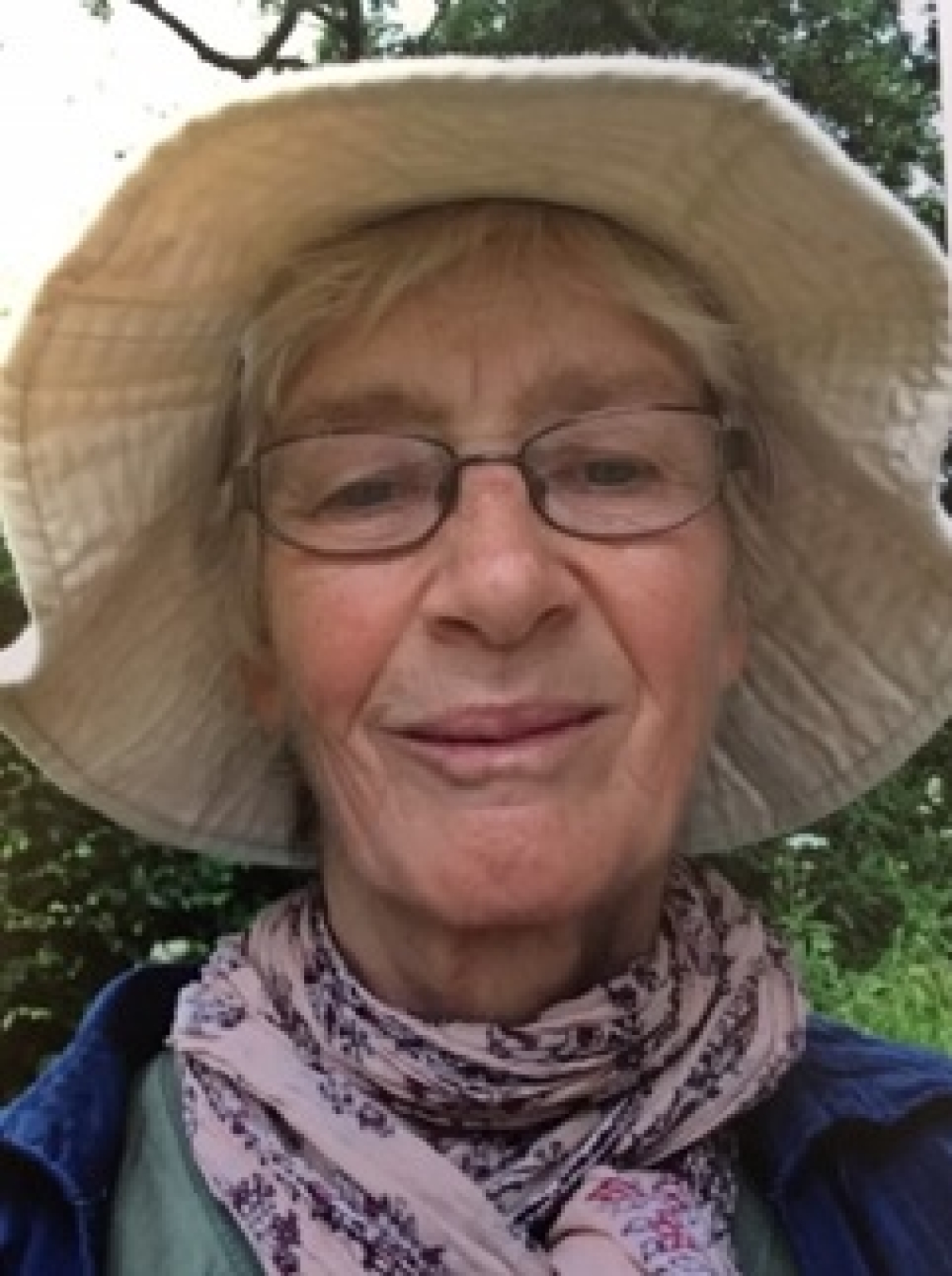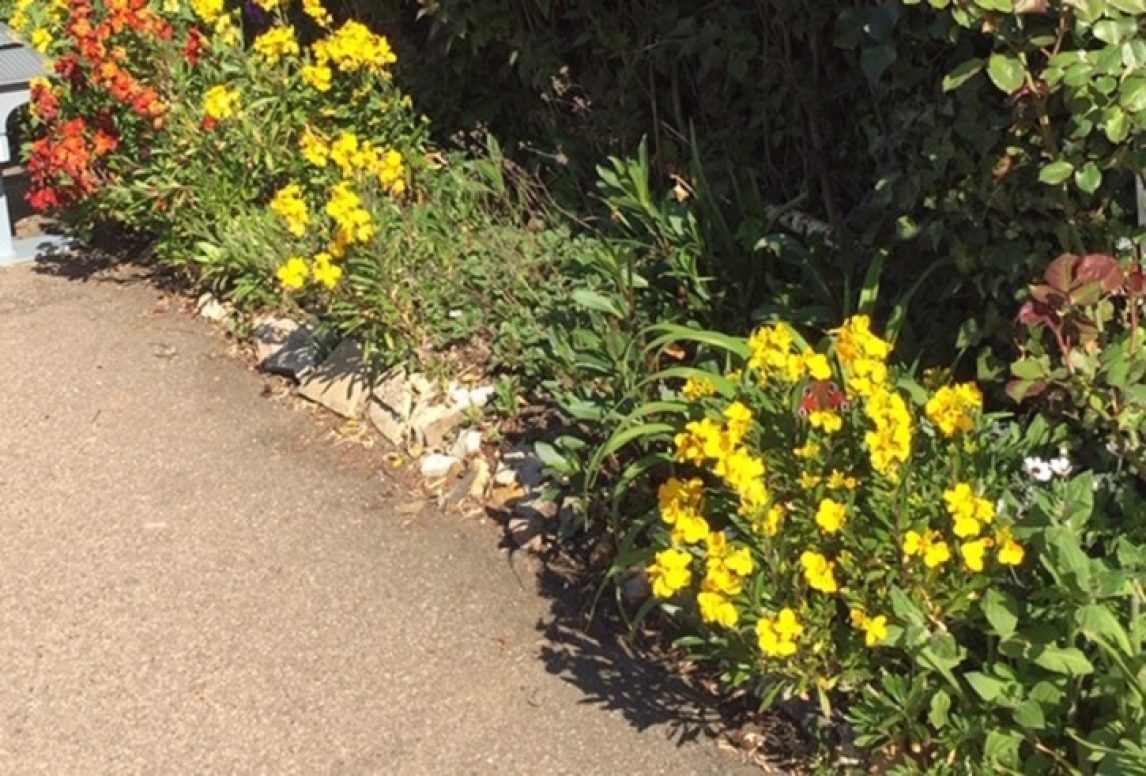Published on: Thursday, 11 June 2020
Last updated: Thursday, 11 June 2020
Background to the scheme
Greater Anglia’s Station Adoption initiative enables individuals or groups to adopt their local railway station and contribute to its use and welfare for the benefit of their community.
Station adopters now playing an active role in keeping stations looking good through inventive gardening projects, creative community art projects, taking part in station ‘health checks’ or being the eyes and ears of their station.
Adopters have been an integral part of raising money for projects such as improved waiting facilities or planting beautiful station gardens.
If you are interested in becoming a station adopter click here .
A chat with Sue Cox – one of three adopters at Somerleyton rail station
How many years have you been adopting?
I moved into Old Station House in 1991 and I started trying to look after the flowerbeds a couple of years later, when I realised that the railway’s regime of strimming and spraying was killing off the last of the plants from the old days, around 20 years prior when the station had been manned.
Shasta Daisies, Michaelmas Daisies, Lupins, Hollyhocks, a sort of Day Lilly thing that is in a bid to take over the world but which I never learned the name of, huge Opium Poppies the like of which I'd never seen... bramble, nettles, Mugwort, Black Horehound, more bramble.. oh and then there was the bramble and the nettles...
I was working full time, bringing up two children, coping with living in a derelict railway station, and my attempts at gardening consisted of rushing out and trying to do enough to the main bed so that the strimming and spraying brigade would notice my efforts and leave it alone.
Complaints from passengers about the poor standard of the flowerbeds didn't do much to raise my spirits, and it was almost routine to come out and find that various kinds of work done around the station meant that plants had been trampled, dug out, or had branches or concrete rubble dumped on them. There was no one to tell and no one to ask. Oh my goodness, those were the days.
Gradually I tamed the monster and took on more and more of the beds. There was still absolutely no communication with the ‘powers-that-be’ and I am not at all sure that anyone anywhere knew what I was doing.
It hadn't stopped being a battle but the flowers began to outdo the weeds. No funding of course, so anything needed to fill in spaces would come out of my own very small pockets or be a donation of excess plants from people in the village - some of which turned out to be nightmarish invasive species (the plants not the people!). Guerrilla planting from passers-by was also quite frequent and I would wait with interest to see what the latest offering would develop into.
Years passed by, I had a bit more time for gardening and a bit more money for plants, and things started to look up. Then one day, looking out of the window, I saw a man DOING GARDENING on the other platform. Not long after this, I (backside in the air and hands amongst the weeds as usual) was approached by someone official looking who asked, "Are you the Station Adopter?" I had absolutely no idea what they were talking about, but I thought it might be a good idea to say "Yes."
And that was how I became an Adopter.
What do you get from being a station adopter?
It's good to be part of something that is big and growing, and to be part of a group of people who have similar aims.
It's very pleasing these days to know the difference that Adopters are making to stations all over the place and to feel that we, here at Somerleyton, are making a contribution.
The funding for plants has been extremely useful and it's nice to go to the meetings, meet the other volunteers and hear what's going on.
The biggest difference that the Station Adopter scheme has brought about for me is the almost unbelievable improvement in communication with teams within Greater Anglia and Network Rail. It's a railway and that comes first, but these days if my flowerbeds are going to be dug up I now at least get some warning, and on the last occasion I was told that the plants would be taken out and put back. "And pigs will be sighted in flight over Somerleyton" thinks I - but the plants actually were taken out and replaced. And if something does go wrong, I know I can always get help.
The very best thing for me about being a Station Adopter is the lovely comments from, and conversations with staff, passengers and passers-by. I'm always happy to talk plants and butterflies. And the comments nowadays are so encouraging.
A young woman recently told me that she always came to the station early so that she had time to look at the flowers. A couple explained that they had driven down with their elderly mother just so she could walk along the platform. A young railwayman told me that he had moved from London and the first thing he noticed about this area was all the wonderful flowers at the stations. An old railwayman, near to tears, talked about station garden he'd once had.
But the best one of all was one summer's day a few years ago now. I happened to be working near the Stop sign, on my knees as usual. The train pulled up, the driver's window came down. The driver looked out and said "I love what you're doing here. It makes my day every time I come through." Up went the window and away went the train.
And it makes my day every time I remember it.
Does it help with your wellbeing?
It's my meditation and relaxation. I become completely absorbed in it. Whatever stress or trouble there may be, my mind is only on the task in hand and the best way to carry it out. It's also my creative activity. Making and maintaining a garden is like creating a work of art. It is very fulfilling, and the fact that the garden has a mind of its own and is always coming up with surprises - where did that plant come from? Who'd have guessed those two would look so good together? - makes it even more so.
I enjoy expressing my own creativity in a way that gives a moment of joy and calm to others.
Working within a group, singly at a station - which do you prefer and why?
Both. Working on my own is meditation and creativity rolled into one. Working with a fellow Adopters is sociable, with an opportunity for valuable exchanges of ideas. And how is it that two people get the work done MORE than twice as fast as one?
What are some of the plants you have at the station?
A mix of old-fashioned garden plants eg Lupin, Honesty, Hollyhock, Wallflower, and wildflowers eg Wild Pea, Campion, Ox-Eye, Violet. Native hedging plants of Holly, Ivy, Wild Honeysuckle, Buckthorn, Yew and Hawthorn.
A wide range of plants and shrubs to provide a wide range of food and habitat for different species. I have chosen specific plants in order to increase the nectar season eg Bowles Mauve and Wallflower. I leave leaf litter and hollow stems left in place over winter for hibernating insects and a wild area with bramble, nettles, rough grasses etc.
The flowerbeds are alive with invertebrates and the air is full of birdsong and calls. The Lizards are doing ok and we have occasional visits from a Grass Snake.
Specific projects have included:
- Planting a Buckthorn hedge to provide a place for Brimstone Butterflies to lay eggs and provide a food source for their caterpillars - Spring 2018
- Planting a Field Maple Hedge - March 2019
- Planting a Wild Honeysuckle Hedge - 2019 and ongoing
- Creating a new wild area - 2019 and ongoing




